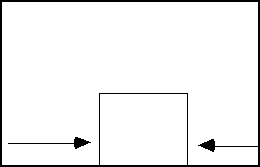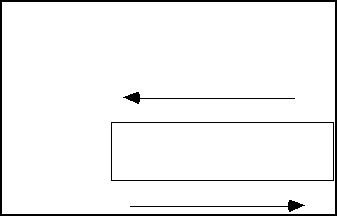
Chapter
6.
Metamorphism
is the solid state transformation of preexisting rock into texturally or
mineralogically distinct new rock, as a result of high temperature and pressure,
The
new rock ===== metamorphic rock in nearly all cases has a different texture and
very common different mineral composition from the original (called) parent
rock.
ex.
Quartz
sandstone+calcite cement === wollastonite+CO2
CaSiO3
These
changes occur in order to restore equilibrium for the gradually changign
Pressure and temperature.
Principal
agents of metamorphizm are:
Temperature
Pressure
Chemistry
of the original (parent) rocks
1. Temperature Changes
Mineral
is said to be STABLE, if given enough time it does not react to become a new
mineral.
Temperature is probably the most important factor in metamorphism. As the
temperature of the rocks changes during metamorphism its minerals become
unstable and react with other minerals to form a new mineral
assemblage, that are stable under the new conditions.
Heat
is also important because it increases the reaction rate.
(oven----
higher temp. burn everything)
Below
200°C the reaction rate is low, this is the sedimentary environment, and rocks
are stable for millions of years.
At
extreme temperature increase, minerals start to melt, and become igneous rocks.
At the transitional boundary, some rock forms. The rocks forming here are called
migmatite.
If
a high temperature metamorphic rock cools down, the minerals became unstable
again, however at the low temperature environment reaction rate is low, these
minerals are called METASTABLE
2. Pressure changes
There
are two kinds of pressure:
Confining
Applied
equally on all surfaces (Hydrostatic)
Diver
in the water (his whole body has the same pressure everywhere)
This
high pressure tend to reduce the space occupied by the different minerals,
and can drive reactions which produce new minerals with closer atomic
packing.
Directed
pressure
Pressure
applied unequally on the surface of a body is directed or (DYNAMIC) pressure.
This pressure tend to deform objects into spindle-shaped or flattened
form.directed compressive pressure


Caused
by directed pressure also, but here the parts of the body move or slide relative
to one another and paralell to the forces. (rolling pin)
The
pressure usually changes abruptly along tectonically active zones. (huge
pressure)
Under
pressure the minerals became ductile and can be slowly deformed as the grains
are slowly move and rotate. Deformation reorients the mineral grains and form
new texture.
3. Chemical activity during
metamorphism
Chemically
active fluids mostly water containing ions in solution, are also very important
in metamorphic processes. Some fluid occur in almost every kind of rocks. In
addition minerals stable at low P,T, such as amphibol, clay, mica are contain OH
in their crystalline structure. At high T,P, this water is forced out from the
mineral structure and is good agent in the rock for further chemical changes.
(The mineral changes caused by the hot fluids are called METASOMATISM).
Directed
pressure has important role in forming met. texture.
The
paralell aligment of textural and structural features of rocks are called
FOLIATION
The rock splits along nearly flet and
paralell planes indicating that
microscopic platy minerals were pushed into aligment during metamorphism.
Visible needle-shaped minerals have grown essentially parallel to one
another during directed pressure
Rock became very plastic and the new minerals are separated into bundles
of different minerals.
PORPHYROBLASTS
Extremely
large crystals in metamorphic rocks
CLASSIFICATION
OF METAMORPHYC ROCKS
TEMPERATURE
DOMINANT
DIRECTED
PRESSURE IS NOT IMPORTANT, THEREFORE THESE ROCKS ARE FREQUENTLY NONFOLIATED.
COOKING
country rocks Contact metamorphism
AUREOLE
(1 - 10 M WIDE)
SHALE
IS changed into hornfels, with visible micas
Along
fault zones, Pressure dominant temperature is not important
Fault
breccia, (force crashes the rock into small fragments)
Ductile
flow can form milonite along fault zone at larger depth
Both
temp. and Pressure
Low
medium
high
Some
minerals are good indicators for certain pressure and temperature range. They
are called Index minerals
Low Grade
slate
phyllite
chlorite
talc
schist
amphibolite
gneiss
ecklogite
|
Parent
rock |
Low
grade |
Medium
grade |
High
grade |
|
Shale,
felsic igneous rock |
Slate,
phyllite |
Mica
schist |
gneiss |
|
Mafic
igneous rocks |
Chlorite,
talc schist |
amphibolite |
eclogite |
|
|
MARBLE |
||
|
|
Quartzite |
||